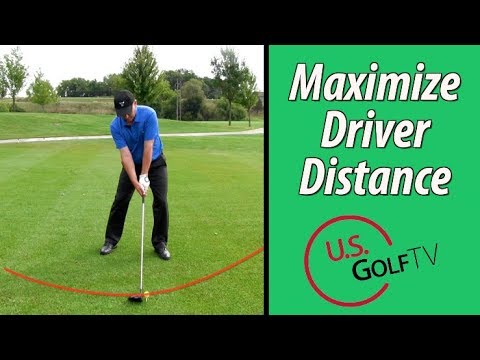
There are many people who have wondered how to achieve backspin during a round. Many golfers have had the same questions. They want to learn how to control the ball's spin so it produces maximum spin. There are six key elements that influence the spin of golf balls. Here are some tips for getting you started.
Backspin on a Golf Ball
There are several ways to make a golf club spin backwards. In order to make your ball spin, you have to hit the ball harder. A golf ball with more spin can be hit more easily. For more backspin to be generated, the ball should be hit at a realistic distance. The ball does not stop at the landing point. You should allow for some rolling after the ball lands.
Six factors should be considered when creating backspin with a golf ball. The angle of attack is one of these. A steeper angle means that the ball is more likely to produce more spin. The direction of the wind can also impact how much spin you can create. The angle of attack will lessen the likelihood of backspin if it blows in the other direction.

Controlling the backspin of a golf ball
Golf is a game that requires backspin. It is important for distance, height and control. The lower the backspin, the less likely it is to strike the ground. Backspin will hit a single spot and bounce less often. Proper swing technique is essential to controlling backspin. Here are some tips for controlling backspin with a golf ball.
Understanding the basics behind spin is the first tip. A golf ball without spin will hit the green on its side, either short or bumpy. Without spin, a ball will roll up and over the green's back and often land off-target. There are some easy tips to control backspin with a golf ball. You will be happy with the results.
Maximum spin on a Golf Ball
Getting maximum spin on a golf ball is a goal that many golfers strive to achieve. Some spin is beneficial, while others aren't. As with any other aspect of golf, the key is to optimize the spin that your ball achieves with your swing, clubs, and balls. These are some tips to improve your spin game. This article was written by Todd Mrowice, Staff Writer for GolfLink. He has covered all aspects of the game, including golf travel, professional tours, and more.
To get maximum spin, choose a ball with a urethane cover. These balls respond well to square grooves when used with short irons. Hard covers will reduce spin while softer balls will continue spinning after impact. Spin is very appealing to low-handicappers. It gives them the control that they need to attack the greens.

Increasing backspin on a golf ball
It is important to improve the backspin of a ball so that it makes the game more interesting and more difficult for opponents. It is essential for the short game because it helps the ball control when it lands. A good backspin will keep your ball on the green and improve your accuracy and precision. Here are some tips to increase your backspin.
Achieving a higher backspin on a ball of golf is as simple as changing the angle at the ball. Most amateur golfers have been taught to hit the ball too steeply, which costs them spin. You can increase the angle of your attack to get more spin with every shot. You should also consider where you hit your ball. The backspin you get from the ball will depend on where you swing.
FAQ
What is a "bogey"?
A bogey is an imaginary number used as a target for golfers. It is not actually part of the game but rather a way of keeping score. The player who shoots closest to the number wins the hole.
Jock HUTCHISON, the first professional player from Scotland, invented the concept of a “bogey”. The idea was born out of his playing at home.
He wanted to keep track on how he was doing against his own self, so he wrote a number down on a piece o paper and stuck it to the wall above him bed. This became the "Hutchy Bogey."
Where can I locate a golf course in my area?
Many cities have their golf courses. These courses offer quiet practice for your swing.
Alternatively, if you prefer a more social atmosphere, you may wish to visit one of the country's many golf resorts.
What are the various types of golf courses available?
There are many different types of courses for golf. Some courses are specifically designed for beginners while others are more suited to the experienced player.
Some courses are near rivers, lakes, mountains, or forests. Others are found in urban areas. There are many options for golf courses.
What kind of clothing do I need to wear on the course
When playing golf, you need to dress appropriately. What should you wear?
-
Appropriate shoes - Golf shoes should fit snugly around your feet. They should provide support and stability.
-
Lightweight pants or shorts – Shorts should cover your knees, thighs and ankles. Trousers should not be too long to allow for easy bending.
-
Long-sleeved shirt - Your shirt should protect you from the sun. You should have good ventilation.
-
Shorts or sweatpants - Pants should not be tight and uncomfortable. They should be able to move freely.
-
Socks
-
Hat – Make sure you choose a hat that fits comfortably. It should cover your ears, neck, and shoulders.
-
Sunscreen lotion - Apply sunscreen before you leave for the golf course.
What is the difference of a driving range versus a putting course?
A driving range allows players to practice hitting balls from distances of 50 yards to 300 yards. For putting practice, players can use putting greens.
What can I do to improve my game of golf?
There are many options to improve your golf game. One option is to join a golf club. A club is a place where you can get together with other golf enthusiasts and learn new skills.
You could also buy some equipment such as clubs and balls. These items will help you to improve your game.
Finally, you can read books on the game. A deeper understanding of the game's rules and regulations can be gained by reading about it.
How is golf scored?
The scorecard is divided in four categories: StrokePlay, Par 3, 4, and 5, respectively. Each category can be further broken down into strokes. To par, a player must complete 18 holes (Par72).
The lowest score wins.
Statistics
- They do this by means of assessing and rating courses according to the average good score of a "bogey golfer," a player with a handicap of around 20. (en.wikipedia.org)
- He shanked the first attempt, but it is estimated his second went more than 200 yards (180 m).[52]Golf courses worldwide. Below are the top 20 countries with the most golf courses as of 2019.[53]CountryNumber of (en.wikipedia.org)
- Professional golfers typically make between 60% and 70% of greens in regulation. (en.wikipedia.org)
- In the United States, women made up 25 percent of golfers in 2021, which was up from 19 percent in 2011, and junior female golfers account for 35 percent or 1.1 million golfers.[50] (en.wikipedia.org)
External Links
How To
How to Hit the Perfect Bunker Shot
A bunkershot is a type if golf shot where you aim your ball at a specific spot (the hole) in order to ensure that the ball doesn't bounce off of the surface. This is accomplished by taking advantage on the slope of green. The goal is to guide the ball towards the hole in the shortest path.
The best way to reach your target point when playing golf is to find the best line. You need to take into account many factors, including how far away you are from the target and what terrain you are hitting through. Also, weather conditions, bounce requirements, and whether the ball needs bouncing off the ground.
To achieve a perfect bunker shot, you must first understand its physics. It is important to determine whether you are going uphill, or downhill. If you are looking uphill, a drawing board is necessary. If you're facing downhill, you'll need to swing with a fade. Next, you'll need to figure out how fast you need to move your body in order to stop the ball from bouncing off the green. This can be done using the angle between you and the ball. Next, determine the dimensions of the bunker you want to aim at.
After you have figured out these basics, you can begin swinging. As you would with any other shot, swing hard enough for the ball to go past the club head. But slow enough to keep the ball from bouncing off green. Once you've found the right speed and trajectory, you can begin your approach. Approach the ball slowly until you are close enough to see the landing area. Next, you should take one final look at the ball before you release it. If everything goes according to plan, you should be able to hit a perfect bunker shot.